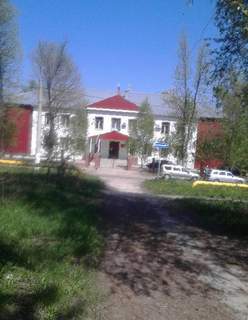I begin to launch the Iron Avia Simulator of the L-29 cabin. There are many questions both on instrument equipment and systems and dynamics plane
Topic: L-29 aircraft

Old -timer Veteran Registration 06.06.2009 Posts 2.910
L-29 plane
I begin to launch the Iron Avia Simulator of the L-29 cabin. Many questions arise both on instrument equipment and systems, and the dynamics of the aircraft. If there is someone who was flying on this plane or knowing this plane, please tell me.
To begin with, this question:
On the instrument panel there is a “stabilizer” signal lamp signaling the refusal of the stabilizer rearrangement mechanism. The question arises, should this lamp burn at the time of release and cleaning of the clicks?
Miniatures

Old -timer Veteran Registration 06.06.2009 Posts 2.910
With the L-29 aircraft, no one is familiar here with us!
Then the issue of the theory of the turbojet engine M-701.
With increasing height, rotor speed increases. In the Earth, small gas revolutions 35-37% at an altitude of 10,000 m will already be 75%. At the same time, with increasing speed, the revolutions should decrease.
The question is how much the rotor speed is reduced when flying at the ground when a speed changes from 300 km/h. up to 0.65-0.7 m?
Miniatures

Old -timer Veteran Registration 04/04/2007 Posts 1.918
Message from RA3DCS
I begin to launch the Iron Avia Simulator of the L-29 cabin. Many questions arise both on instrument equipment and systems, and the dynamics of the aircraft. If there is someone who was flying on this plane or knowing this plane, please tell me.
To begin with, this question:
On the instrument panel there is a “stabilizer” signal lamp signaling the refusal of the stabilizer rearrangement mechanism. The question arises, should this lamp burn at the time of release and cleaning of the clicks?
Dear RA3DCS
Since none of the forum users wanted to answer this topic I will try
Bring some clarity of piloting the L-29 (1967). True for the past 40 years, much that has been forgotten, but do not obscure.
So, the reality from memory, after starting the engine start steering down the soil
at a speed of not more than 30 km/hour. Before take -off, the trimmer is set to the second division on itself. How does the plane behave when taking off I already
I wrote in some branch (on this forum or avia ru)
After taking off and cleaning the chassis on H = 25-30m engine speed -94% in winter and 97% in the summer. A set of height is produced at a dash speed of 250 km/h. Cloths at an altitude of at least 100m at an altitude of 150 m on the beginning of the first turn. First and second The reversal is performed with a roll of 25-30 degrees at a speed of 300 km/h on the device. Before the traverse of the runway, the turnover is reduced by 10%. At a speed of 290 km/h, the chassis is released and the speed increases to 85%. Fulfits to the third turn and reversal are performed at speed 250 km/h, according to the device of the third turn, the aircraft is transferred to a decrease with a vertic. Closure of 3-5 m/s at a speed of 250.Tan is released by flaps by 15 degrees, and the trimmer is placed on the 4th division. Engine defense is installed by 70- 75%. The fourth reversal is performed at an altitude of 400 m, the output of 300-250m speed 250, the roll 30 degrees the outlet of the clips in the landing of the 4th after the 4th
Understanding on H = 250m. Skurity on planning 200 km/h 60-65%turnover. Good luck.





